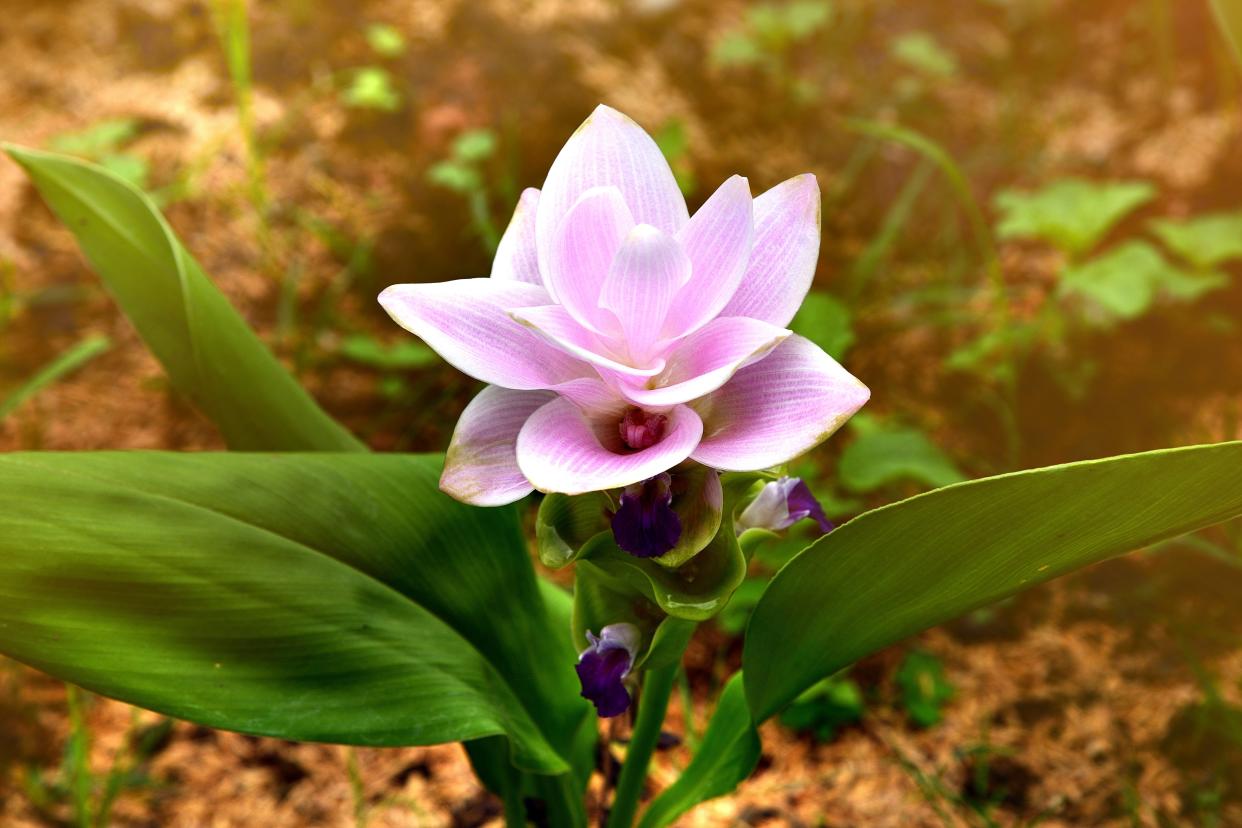CHARLES REYNOLDS: Small gingers boast bright colors in shade

Siam tulips, native to Southeast Asia and India, are part of the ginger family and — as you’ve probably surmised — have nothing to do with tulips. These rhizomatous, winter-dormant perennials (Curcuma alismatifolia) have glossy-green, spear-shaped foliage that grows about 2 feet tall. Held above the leaves on lengthy stalks are flower-like bracts that can be red, white or shades of pink. The true flowers, which resemble tiny orchid blossoms, appear below, emerging from cuplike bracts. The display begins in late spring and continues into mid-autumn, when plants begin to enter dormancy and die back.
Although they tolerate considerable sunlight, Siam tulips do best in bright, dappled light or in locations where they receive morning sun and afternoon shade. Sites should be organically improved and kept moist during the growing season. Propagation is by division in early spring. Siam tulips also succeed in containers both indoors and outdoors and are popular as cut flowers. Plants are available online.
DWARF CACTUS DEVELOPS COLORFUL CAP
Famed for its bristly, orange cap, the dwarf melon cactus — aka Turk’s cap cactus — has long been a favorite among cactus fans. This small, globular, ribbed and spiny species (Melocactus matazanus) grows only 3½ inches high and wide and begins forming its cephalium — cap — when just 4 years old. Small flowers develop in the cephalium, followed by pink, upright fruit that contain tiny seeds. Native to Cuba, dwarf Turk’s cap revels in bright light and is fairly fussy about watering, as are the other 30 or so species of Melocactus. I once lost a handsome specimen growing in pumice-based soil, probably because I kept it too damp. I recommend using clay pots filled with cactus-and-succulent potting soil blended with extra perlite to improve aeration. Plants are available online.
START RIGHT WITH ANNUALS
The finest annuals I’ve ever seen were cultivated by a no-nonsense woman who provided each plant with a hole excavated by a posthole digger and filled with topsoil. Most folks can’t follow her example, but the method points out the importance of good soil for annuals. Generally, blending planting soil or composted manure into the site’s existing soil is good enough. Before installing plants, water both them and the site thoroughly. Following installation, a layer of mulch will reduce irrigation chores, though watering plants every two or three days for a month will probably be required. Fertilize at recommended intervals with Osmocote. Enduring all the heat and sun our climate can deliver are tried-and-tested annuals such as marigold, celosia, zinnia, purslane and amaranthus.
SUMMER WEATHER LIIMITS VEGETABLE OPTIONS
As we approach summer, relatively few crops can be planted. Among traditional choices are Southern peas, okra, sweet potato, chard, peanut and cherry and Roma tomatoes. There’s also Malabar and New Zealand spinach — plants that provide spinach-like greens that can be eaten raw or cooked throughout the warm season. For truly tropical crops, try jacima (Mexican turnip) and malanga (cocoyam).
This article originally appeared on The Ledger: WEEKEND PLANTINGS

